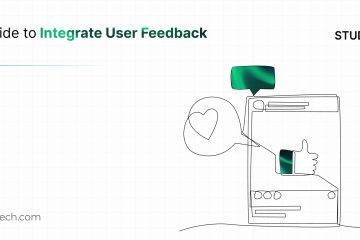In today’s day and age where attention spans are dwindling, digital learning would be successful only if the user experience it offers is engaging and immersive. UX is a significant part of digital learning design, and therefore the need to create a seamless and intuitive experience for learners is a no-brainer. What’s even more interesting is how research supports the fact that user interface and user interaction design decisions significantly impact learning outcomes.

Image Source: freepik.com
The Cereal bowl analogy is often used to describe the role of UX design in the learning experience. Consider taking an e-learning course akin to eating a cereal bowl. While the course content is cereal and milk, the interface or the platform is the bowl and spoon. If the said tools are used, the eating experience is smooth. But, if the spoon in the situation is replaced with a fork, the whole eating experience becomes messy. That’s exactly what a positive UX design brings to the equation.
In this blog, let’s identify 3 key UX challenges that are typically characteristic while designing a UX platform for learning and coaching, and discuss ways to tackle them.
1. Designing for trust by using trust markers: The first part of designing for trust is using consistent style indicators to help build strong resonance with your brand. Designing for consistency and dependability are two traits that go a long way in building trust with your users. Use human-centric elements and assets for learners to connect with your platform intrinsically. Steer clear from visual complexity that overwhelms users and keep your design simple and succinct. The use of clear information hierarchy, strong contrast of colors, and easy-to-read navigable content are some useful factors that build trust.
A case in point is the global learning platform, Coursera, that has a thoughtfully designed menu and navigation. Coursera caters to a heterogenous user base and allows setting up of user profiles in quick simple steps without having to go through a tedious registration process.
2.Enabling ease of use through clear navigation: One of the ways to reduce cognitive overload for learners is to help them maneuver the learning platform easily through intuitive design. This can be done by removing potential distractions that could impede learning. Making use of collapsible sidebars could help simplify complex workflows. Ensure that as UX designers, you design navigation in a way that actionable items are distinctly highlighted on your e-learning and coaching platform. You can probably use visual cues and color for this purpose. Make it easy for learners to access actionable buttons upfront while they get started, rather than making them hunt for it. Given that learning and coaching typically tends to be content-intensive with a risk of information overload, it is important to simplify browsability, make content easily accessible and discoverable by building distinct features such as filters, simple menu structure, context-sensitive design, and a robust information architecture.
3. Optimizing learning through user-centered design: Give users control over the pacing of the course they are taking up by designing learning modes such as instructor-driven learning and self-paced learning. Segment huge learning modules into bite-sized concept chunks to drive micro learning. Make learning accessible anytime, anywhere by incorporating responsive design. Build out features from a user-centric standpoint by designing for their real requirements instead of adopting a feature-driven approach. Follow iterative prototyping to get into a multi-staged UX design process that encourages user feedback and involves incremental planning and strategy revisions with relevant user groups. Use a combination of text and visuals, given that it improves learning and sustains user interest quite significantly. At the same time, make sure that extraneous graphics that are merely decorative are used minimally or even done away with. Such extraneous imagery could add to cognitive dissonance. Adhere to certain basic design principles such as the design principle of proximity, wherein text relating to an image appears in close vicinity to that image.
For related reading, check out this case study on how we designed a robust learning and coaching platform for our customer.


